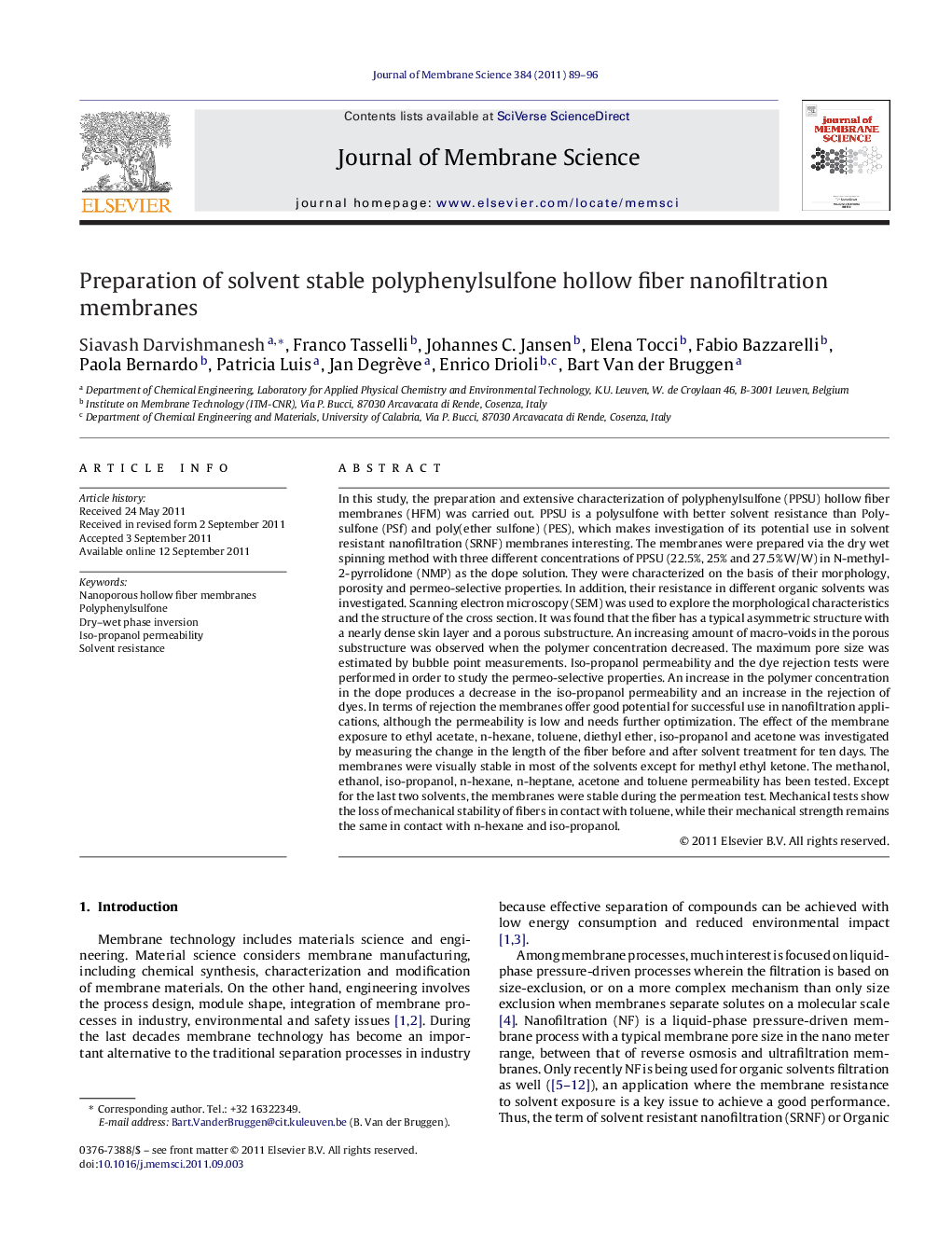| Article ID | Journal | Published Year | Pages | File Type |
|---|---|---|---|---|
| 635391 | Journal of Membrane Science | 2011 | 8 Pages |
In this study, the preparation and extensive characterization of polyphenylsulfone (PPSU) hollow fiber membranes (HFM) was carried out. PPSU is a polysulfone with better solvent resistance than Polysulfone (PSf) and poly(ether sulfone) (PES), which makes investigation of its potential use in solvent resistant nanofiltration (SRNF) membranes interesting. The membranes were prepared via the dry wet spinning method with three different concentrations of PPSU (22.5%, 25% and 27.5% W/W) in N-methyl-2-pyrrolidone (NMP) as the dope solution. They were characterized on the basis of their morphology, porosity and permeo-selective properties. In addition, their resistance in different organic solvents was investigated. Scanning electron microscopy (SEM) was used to explore the morphological characteristics and the structure of the cross section. It was found that the fiber has a typical asymmetric structure with a nearly dense skin layer and a porous substructure. An increasing amount of macro-voids in the porous substructure was observed when the polymer concentration decreased. The maximum pore size was estimated by bubble point measurements. Iso-propanol permeability and the dye rejection tests were performed in order to study the permeo-selective properties. An increase in the polymer concentration in the dope produces a decrease in the iso-propanol permeability and an increase in the rejection of dyes. In terms of rejection the membranes offer good potential for successful use in nanofiltration applications, although the permeability is low and needs further optimization. The effect of the membrane exposure to ethyl acetate, n-hexane, toluene, diethyl ether, iso-propanol and acetone was investigated by measuring the change in the length of the fiber before and after solvent treatment for ten days. The membranes were visually stable in most of the solvents except for methyl ethyl ketone. The methanol, ethanol, iso-propanol, n-hexane, n-heptane, acetone and toluene permeability has been tested. Except for the last two solvents, the membranes were stable during the permeation test. Mechanical tests show the loss of mechanical stability of fibers in contact with toluene, while their mechanical strength remains the same in contact with n-hexane and iso-propanol.
► Hollow fibers made of PPSU were synthesized for the first time. ► The newly prepared fibers were stable in a wide range of organic solvents including methanol, ethanol, iso-propanol, n-hexane, n-heptane, acetone and toluene. ► PPSU membranes were found suitable for organic solvent nanofiltration.
